Our alphabet is remarkable. Over the last 3,000 years, it has passed from empire to empire, all without fundamentally changing. Today, nearly 70 percent of the world’s population uses a variation of the alphabet used by the ancient Greek author Homer!
The British Empire, which exported its language to huge swathes of the Earth and was the largest empire the world has ever seen, is the reason we all speak English today. But the British inherited the alphabet from the earlier Latin alphabet of the Roman Empire. And the Italians, who were in love with ancient Greek culture (in an “affair” known as Hellenism), derived their alphabet from the one used by the Greeks.
So the English alphabet can easily be traced back to the ancient Greeks, but the question is: Where did the Greeks get their alphabet?
If you’ve studied language, you have probably read how the Greeks, who originally used a completely different Mycenaean alphabet, adopted their new “classical” alphabet from the Phoenicians. Scholars believe the Greeks adopted this new alphabet sometime around the beginning of the first millennium b.c.e.

Famous as maritime traders, the Phoenicians conducted a lot of trade throughout the Mediterranean, and we are told, this is when they would have passed along their alphabet to the Greeks. Herodotus, the Greek historian, states that the “Phoenicians, who came with [King] Cadmus … brought with them to Hellas [Greece], among many other kinds of learning, the alphabet, which had been unknown before this, I think, to the Greeks” (The Histories, 5.58.1).
While there is logic to this supposition, the evidence is far from incontrovertible. The truth is, we know very little about the Phoenicians. They are actually regarded as a “lost” civilization—ironically, due to a lack of written Phoenician records. Scholars still don’t even agree on exactly who these people were and whether or not they were distinct from the Canaanites or “other residents” of the Levant (including the Israelites) (see “Sidebar: How ‘Israelite’ Were the Phoenicians Anyway?” below). As Will Durant wrote in his famous work The Story of Civilization: Our Oriental Heritage “The historian is abashed before any question of origins: He must confess that he knows next to nothing about either the early or the late history of this ubiquitous, yet elusive, people.”
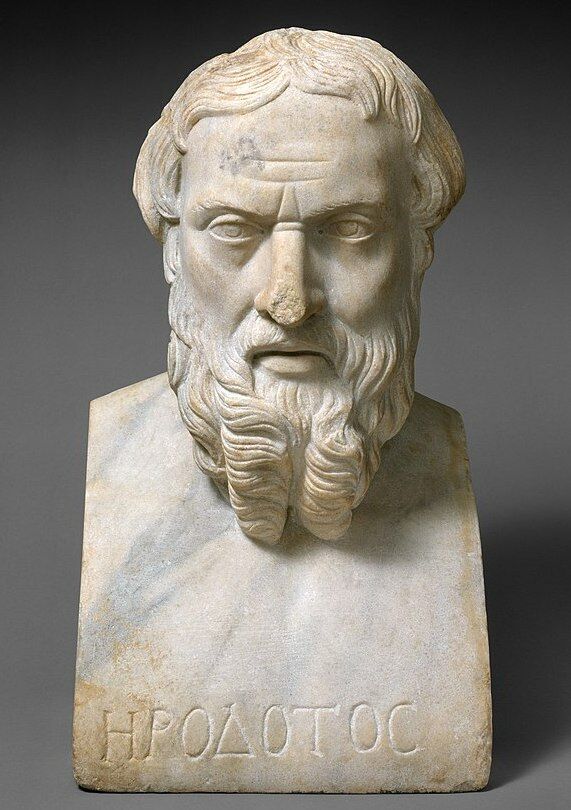
And what about the Phoenician King Cadmus? Herodotus claims that he ruled 1,600 years before his own lifetime, which would have been around 2100 b.c.e. But this is around 1,000 years before the Greeks adopted the alphabet, and even centuries before the development of the first “proto-Sinaitic” alphabet (see “Sidebar: The Proto-Siniatic Alphabet” below).
The belief that the Greeks acquired the alphabet from the Phoenicians is far from watertight. This raises the question: Could the Greeks have acquired the alphabet from another people? Could it have come from another prosperous and advanced civilization, one settled next to the Phoenicians that worked closely together with them—namely, the Israelites?
It’s no secret that modern academia has a bias against ancient Israel and especially the biblical record. “In the past,” stated Israeli archaeologist Prof. Avraham Faust in a 2019 interview with Haaretz, “archaeological evidence has often been stretched to fit the biblical narrative, so researchers today tend to reject any such possible link out of hand” (emphasis added throughout). Has this inherent bias influenced the research into the perpetuation of the alphabet?
What if the ancient Israelites are responsible, or at least partly responsible, for what is now the most widely used writing system in the world?

Phoenician Influence, or Israelite?
The term “Phoenician” is not found in the Hebrew Bible. Instead, the Bible references separate city-states, such as Tyre and Sidon. (Recall the story of King Hiram of Tyre who aided both David and Solomon’s construction projects.) The historical record concurs with the Bible on this point, and shows that Phoenicia was more of a collection of multi-ethnic independent city-states (including Tyre, Sidon, Byblos and Carthage) than a single empire.
Much more about the Phoenicians is known from the middle-to-late first millennium b.c.e. But what about the crucial 11th-to-8th century b.c.e. period, when the alphabet was transferred to the Greeks? And what about Israel at this time? Did it have the power and presence to meaningfully impact surrounding nations?
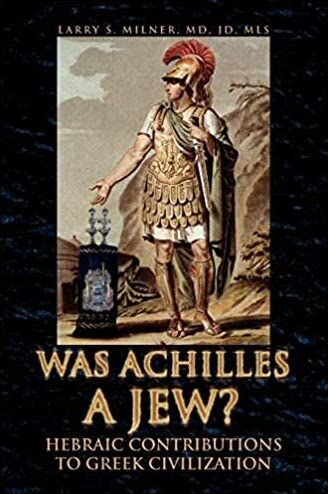
Dr. Larry S. Milner has compiled a large amount of research on the close ties between ancient Israel and the Greeks. He writes in his lengthy work Was Achilles a Jew?: “Since ancient times, the Phoenicians have been credited with providing this input [of Semitic words into the Greek language], and this concept carried over into the modern era …. Although most linguists have placed this merger in the eighth century b.c.e., recent evidence has convinced some authorities that the Phoenician contribution may have taken place as early as 1100 b.c.e., a time when the Greek mainland was entering the Dark Age following the Trojan War. This dating would also be consistent with a Hebraic, rather than a Phoenician, input….”
Milner was not the first to make this suggestion. Actually, he was preempted by nearly 2,200 years. He continues: “A Hebraic contribution, rather than a Phoenician origin for the inclusion of Semitic words in the Greek language, was first suggested by the Hellenistic Jewish historian Eupolemus (second century b.c.e.) ….”
Eupolemus wrote: “Moses was the first wise man, the first who imparted the alphabet to the Jews; the Phoenicians received it from the Jews, and the Greeks from the Phoenicians” (Fragment 1).
There is a close similarity between the Phoenician, Hebrew and Canaanite alphabets. Particularly around the start of the first millennium b.c.e., the alphabets used by these separate entities are virtually indistinguishable. But some clues may indicate the transmission of a specifically Hebrew alphabet to the Greek world at this time. Milner continues: “[R]ecent scholarship has supported this view by showing that the Hebrew modification of doubling up three of the letters to be used as vowels (h, w, y) may have been used as a basis for the Greek and Latin alphabets.”

The Greek bishop Eusebius of Caesarea made a similar observation in the third century c.e. Using specific letter styles, he linked the origin of the Greek alphabet directly to the Hebrews, rather than the Phoenicians.
While scholars can and do debate the letter style and order, and what it means, the fact is that the Phoenician people—separate city-states though they were—were a known trade entity, thus providing a ready explanation for the spread of the alphabet. But what about Israel? Can we connect the kingdom of Israel with the Greek world, especially at the end of the second millennium b.c.e. and the beginning of the first, when we know the alphabet was transferred to the Greeks?
Dan and Greece
The Bible contains numerous fascinating tidbits of information showing Israel and Greece had contact. For example, the Prophet Ezekiel (sixth century b.c.e.) lists the Israelite tribe of Dan side by side with Greece in a chapter describing maritime trade. “Dan also and Javan [the biblical name for the Greeks] going to and fro occupied in thy fairs …” (Ezekiel 27:19; King James Version).
There is significant debate about the translation of this verse. Some scholars believe the phrase “going to and fro” is better translated as a place name—i.e., Dan and Javan delivered goods from Uzal ….” The Septuagint adds additional detail in the verse prior, describing goods as coming from the famous Greek city of Miletus. Still, there isn’t a consensus on exactly how this verse should be interpreted.
But there is another, much earlier reference to a seafaring tribe of Dan. About 600 years earlier, the Israelites were embroiled in a battle against the northern Canaanites (during the time of the judges). At the end of the victorious battle, criticism is leveled at certain of the Israelite tribes who did not show up to fight. “[W]hy did Dan remain in ships? Asher continued on the sea shore, and abode in his breaches [ports]” (Judges 5:17; kjv). This passage clearly shows that the seafaring Danites were out in ships—a Hebrew word referring to large, long-distance vessels.
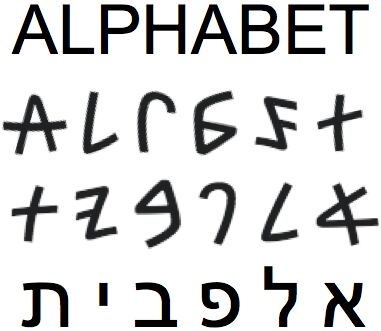
The Israelites (from the tribe of Dan) were traversing the Mediterranean Sea at exactly the same time Milner relates that the alphabet—or at least certain Semitic words—began to make its way into Greece. Notice too, the Asherites—who were actually allocated much of the “Phoenician” tribal territory (see Joshua 19:24-31)—were also criticized for focusing on maritime ventures and refusing to help their brothers.
Besides the textual clues, archaeological discoveries also reveal a close link between the Israelites—specifically the Danites—and Greeks. Excavations at Tel Dan, the ancient “capital” of the tribe of Dan, have revealed a heavy Greek relationship throughout the Iron Age, including Greek-style objects of worship, a Greek-style sanctuary, Greek weapons and Greek-style burials.
Consider this statement by archaeologist Philippe Bohstrom, in an article published in Haaretz titled “Tribe of Dan: Sons of Israel, or of Greek Mercenaries Hired by Egypt?”: “[R]ecent excavations [at Tel Dan] have uncovered a large neighborhood from the 12th–11th century b.c.e. that shows compelling Aegean influences.” In one tomb, “archaeologists found more than 100 ceramic vessels that proved, by chemical analysis, to mostly originate in the Argolid in Greece, the center of Mycenaean culture during the Bronze Age. … The excavators at Dan also found vessels decorated with Aegean-style birds, chalices, offering bowls, a model silo, and curious brain-shaped stones that may have been used in ritual” (Dec. 4, 2016).
How did all this Greek fare end up in Israel? Bohstrom wrote that there are “indications of very strong cultural ties between Dan and the Aegean world …. The discoveries have rekindled a long-standing academic brawl over the origin of the Danites. … Do they have anything to do with a mysterious kingdom called Danuna mentioned in ancient writing found in Turkey? Or maybe with the Denyen—a faction of invading sea peoples, according to ancient Egyptian sources? Or with the Danaoi, one of the Greek tribes? Or are these all one and the same? The findings at Tell el-Qadi (now Tel Dan) suggest they could well be.”

The famous late Israeli archaeologist Yigael Yadin also posited a connection between the Danites and a mysterious seafaring people called “Denyen,” who lived in a north-Levant territory called “Danuna” (an area later regarded as “Phoenician”). The Greek poet Homer wrote of a seafaring group called Danaan whose ships joined the Greeks in the battle against Troy. (Interestingly, this famous battle occurred around the same time as the one recorded in Judges 5, where Dan is criticized for being away “in ships.”)
Even ancient Irish histories record the migration to Ireland of a Mediterranean group they called Tuatha de Danann (tribe of Danann), a tribe that had been constantly embattled with the Philistines (i.e. as related in the 11th-century c.e. work Lebor Gabála Érenn). Whose biblical territory bordered Philistia? The tribe of Dan. And remember the story of Samson and the Philistines? He was a famous Danite judge (see the sidebar below).
The suggestion that the Danites traveled the Mediterranean and even sailed as far from home as Ireland might seem outlandish. But it is documented, both in the Bible and in ancient secular texts—and now, remarkably, in some new archaeological discoveries. Namely, in evidence of 13th-12th century b.c.e. tin trade between the Israelite port of Haifa and the British Isles!
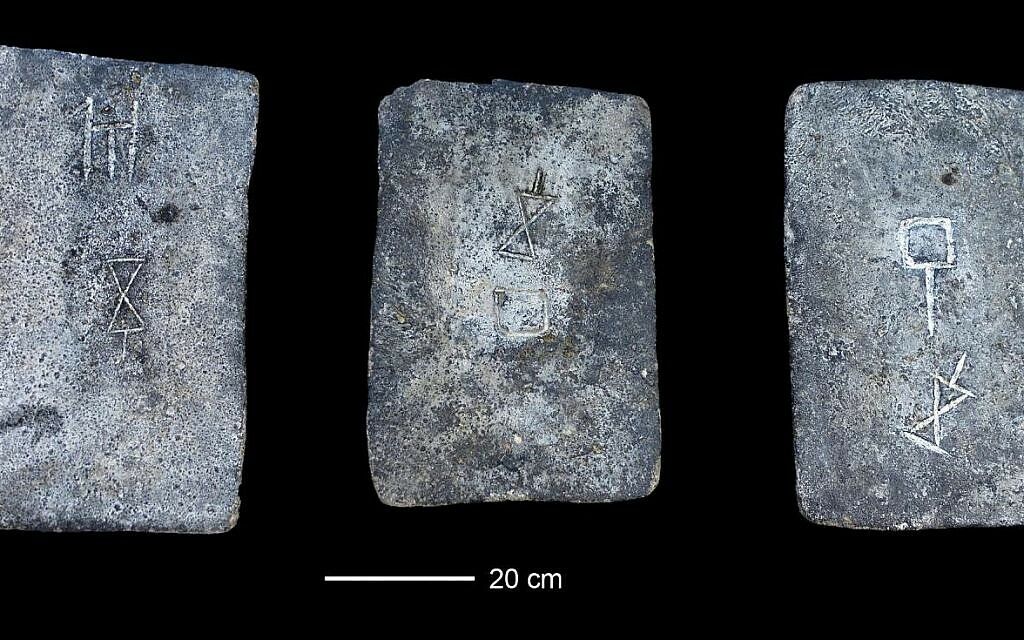
Note also that Haifa’s port is within territory allocated to the tribe of Asher. What did the Prophetess Deborah complain about regarding the Asherites in Judges 5, at this very time period? She accused them of remaining in their ports—receiving and facilitating trade, apparently including “British” tin imports, and surely more than that, their language and writing system, too!
A Philistine Microcosm
As the Israelites traversed the Mediterranean, they would have no doubt interacted with the Greeks in their island cities and trade ports. But what about the Greeks? Is there any evidence that the Greeks themselves “visited” the land of Israel, perhaps settling there in some form and readily adopting the Hebrew alphabet during the very “transfer time” in question?
Enter the Philistines.
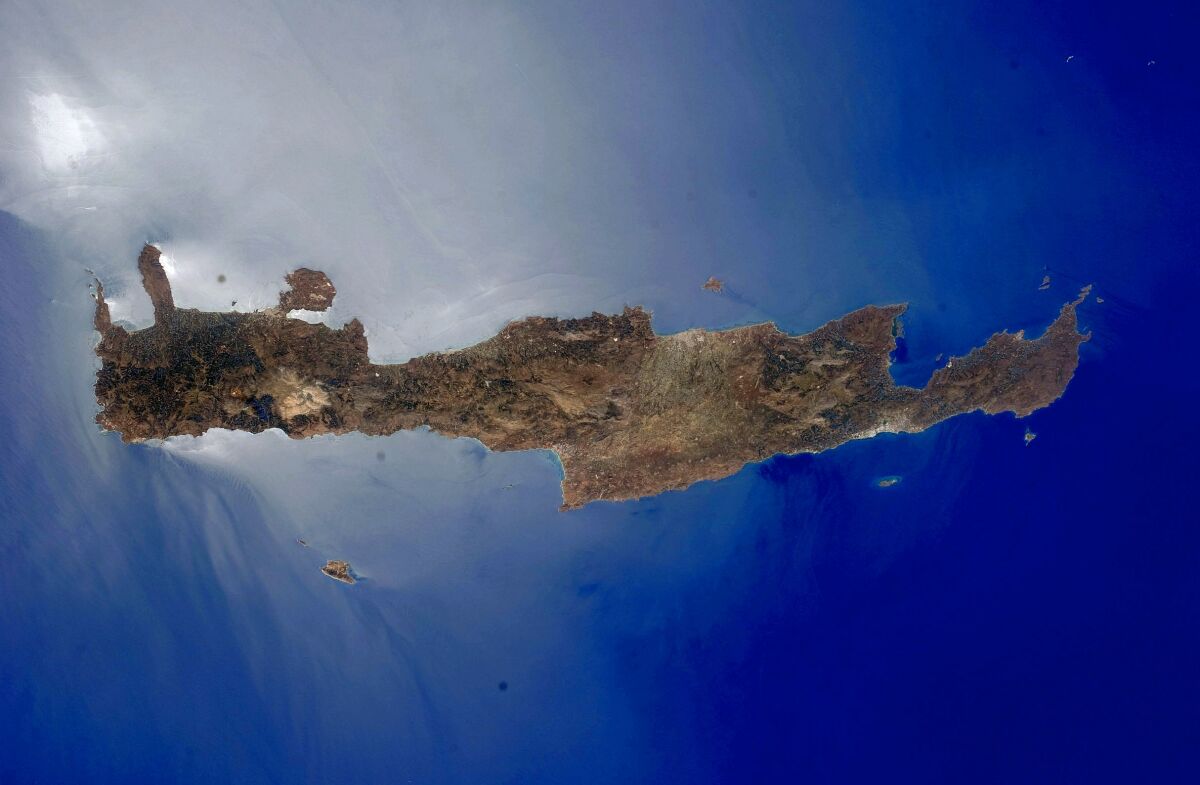
Scholars had long suspected the Philistines of immigrating to the Holy Land from the Greek isles. Indeed, the Bible indicates the largest Greek island, Crete, as their point of origin (named “Caphtor”; note Amos 9:7, also Ezekiel 25:16). In 2020, this was corroborated by dna analysis pointing to a major Philistine migration from Crete that happened around the 13th to 12th centuries b.c.e.
To date, few Philistine inscriptions have been found, and the Philistine language remains a mystery. Scientists do not know what language the Philistines came to Israel with (and Crete is known for its strange, undeciphered writing systems). The earliest-known Philistine inscription dates to the 10th century b.c.e. This inscription, and all following Philistine inscriptions, are written in the Hebrew-Phoenician alphabet.

Evidently, the Philistines adopted the Hebrew-Phoenician alphabet sometime during or prior to the 10th century b.c.e. They did have distinctly different Philistine words and names (known from the Bible, as well as inscriptions). These words were connected to their original Indo-European language, but by this point, they were transliterating them into the Hebrew-Phoenician alphabet.
It’s possible that the Philistines received the alphabet from native Canaanites. Or perhaps from the northern Phoenicians on the other side of Israel. But there isn’t a lot of archaeological or historical evidence of interactions between these people. Meanwhile, ancient texts and archaeological evidence showing Philistine-Israelite interaction is legion; we have scientific evidence of numerous wars, alliances, marriages!
Thus, during the 11th-to-eighth century “alphabet transfer period,” we see the full adoption of the Hebrew-Phoenician alphabet by a smaller “Greek” community that lived alongside Israel. Is it coincidence that this occurred around the same time as the wider Greek world’s adoption of the same alphabet?
Now, let’s consider the catalyst for the spread of an alphabet.
Effect of Empire
Today, English is the language of international communication. It’s the language of business and international politics; it’s the most common language on the Internet. Travel anywhere in the world and you’ll come across the English language. Why is it the world’s most popular international language? Basically, the ubiquity of English gets back to the power, influence, dominance and education of the British Empire.
When the British Empire was growing, the Dutch were also a powerful trading nation. They had a network of seaports and coastal domains all around the world. (You might think of the Dutch as the Phoenician traders, with their port cities all around the world.)

Yet the world doesn’t speak Dutch. Chances are, if you’re an English speaker and you’re reading this, you know more German, French or Spanish than Dutch. Even the largest territories held by the Dutch—most notably Indonesia—do not list Dutch as an official national language. Conversely, even the smallest territory (and one of the furthest)in the British Commonwealth, Tuvalu, does list English as one of its official languages, taught to all children (despite the language being rarely used by the island’s 10,000 inhabitants and an insignificant level of tourism).
The point is: It takes empire, power, prosperity and influence over vast territory to effect sweeping change. Spreading your language requires massive global influence!
Both Britain and Rome had this. At its peak, the British Empire controlled more than a quarter of the Earth’s surface. Rome too controlled most of the civilized world. It was the same with the earlier Greeks. It is not a coincidence that the alphabet was preserved through these three major empires!
So was there an empire before Greece—between the 11th and eighth centuries b.c.e.—that possessed the power and influence to persuade the Greeks to adopt its alphabet? The Phoenicians never possessed such imperial influence—let alone a single, united nation of “Phoenicia” at the time. But what about Israel?
The Language of Solomon
King Solomon reigned for 40 years during the critical 10th century b.c.e., the heart of the “alphabet transfer” period, and when the Hebrew-Phoenician alphabet became much more standardized. You’re likely familiar with the biblical account of Solomon’s extraordinary wealth and power (1 Kings 10).
Long has the debate raged as to whether or not Solomon existed, let alone the size, scope, wealth and power of Israel under Solomon. But if scholars can put a “lost civilization” of Phoenicia on a pedestal based on minimal archaeological evidence and heavy reliance on later textual evidence, then the same can be done for Solomon’s kingdom. (For that matter, a slew of new discoveries has been emerging over the past several decades that do provide evidence for the biblical depiction of Solomon’s reign.)

Solomon’s kingdom, according to the biblical account, was renowned far and wide. His temple, covered in gold, was a wonder of the ancient world. In today’s money, the value of the gold has been estimated at roughly $300 billion (1 trillion shekels; by comparison, Israel’s current gross domestic product is about 1.3 trillion shekels). Leaders and representatives traveled from far and wide to pay their respects to the king, to see his kingdom, and to test his unmatched wisdom.
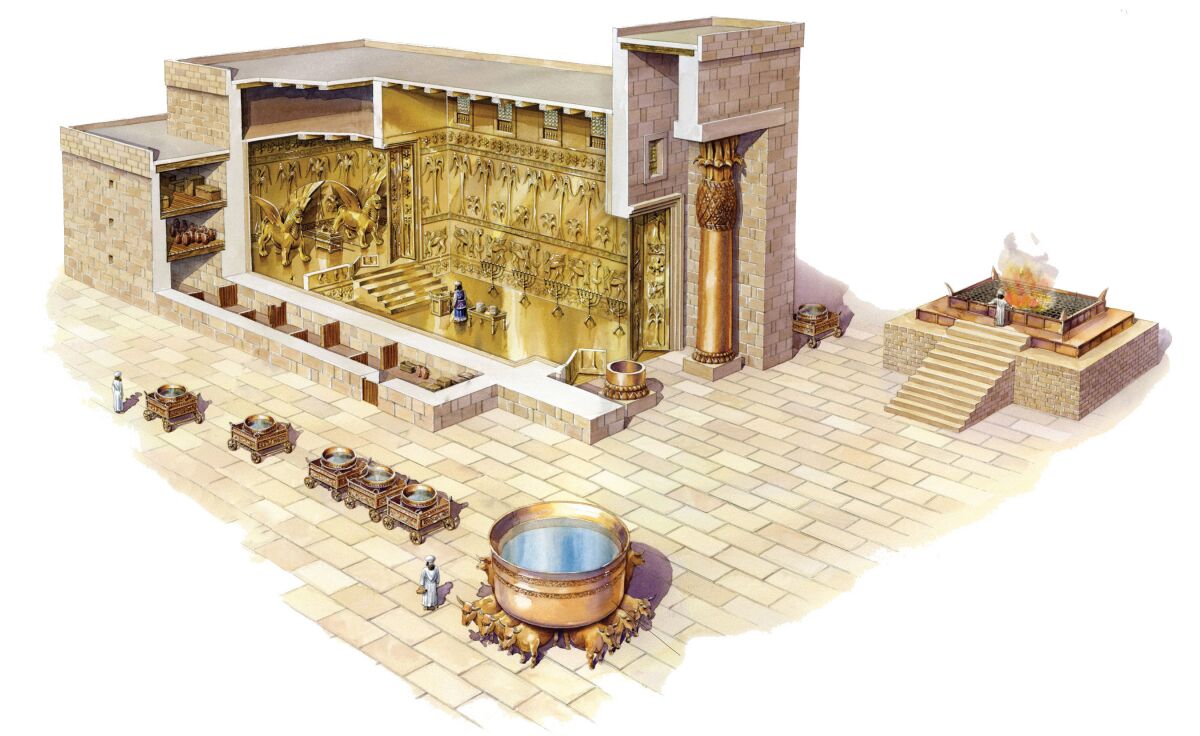
Solomon became heir to his father’s newly conquered and massively expanded territory in the Levant, acquired between 1000 and 970 b.c.e., including land in Lebanon and Syria, as well as territory in the Sinai Peninsula (e.g. 1 Kings 9:19). And not only did David and Solomon rule over their Israelite kingdom, they also directly reigned over other surrounding “kingdoms” (1 Kings 5:1). All Canaanites in and around the region—perhaps even as far away as Turkey (the seat of Hittite dominion)—were tributary (1 Kings 9:20-21).
Solomon also had a first-class merchant navy that sailed the known world, bringing him gold, silver, ivory, apes and peacocks. His fleets were divided between the Red Sea in the south and the Mediterranean Sea to the west (verses 26-28; 1 Kings 10:22-23). Solomon became a major arms dealer and merchant, importing goods from Egypt and selling chariots and horses to kingdoms as far north as Turkey (verses 28-29).
Famously, Solomon married 700 wives from far and wide. In those days, this meant political connections—thus, connections to Egypt, Moab, Ammon, Edom, Zidon (the “Phoenician” city), Turkey, and more (1 Kings 11:1-3); could this have been responsible for Israel’s “familial” connections to the Greeks? (See “Sidebar: Spartans: Brothers of Jews?” below)

The Bible states that everyone—from the Ethiopians to the Zidonians to the Arabians—“all the kings of the earth”—brought gifts of all types to Solomon (2 Chronicles 9:14, 23-24), including, most famously, the queen of Sheba, who undertook a grueling weeks-long journey to Israel by “very great train” (1 Kings 10:2). The Bible affirms that the “riches and honour” of Solomon were unmatched by any king during his lifetime (1 Kings 3:12-13). Silver was so common that it became worthless (2 Chronicles 9:20, 27).
“[A]nd his fame was in all the nations round about. … So king Solomon exceeded all the kings of the earth in riches and in wisdom. And all the earth sought the presence of Solomon, to hear his wisdom, which God had put in his heart” (1 Kings 5:11; 10:23-24).
Many scholars conclude that the Bible is being overly dramatic. Surely Israel could not have had more riches and power—even influence on the world around them—than the mighty Assyrians, Hittites, Babylonians, Egyptians. But here, remarkably, the archaeological record provides matching geopolitical context for the biblical account!
A ‘Period of Chaos’
This Israelite “empire” lasted nearly a century, from King David through to the start of the reign of Solomon’s son Rehoboam (around 1011–930 b.c.e., reaching its peak about the middle of that period). During this time, there was a notable and mysterious void in world politics.
The Egyptian empire, by this point, had recently fallen during the Bronze Age Collapse (around 1150 b.c.e.), never to rise to the same height of power. Virtually all eastern Mediterranean kingdoms had likewise collapsed and were languishing. The powerful Hittite empire (which controlled much of Turkey) had fallen. The Middle Assyrian empire had ended—it was now in a 150-year gap before the start of the “Neo-Assyrian” empire, which started, interestingly, right after Solomon’s reign and the collapse of Israel’s united monarchy (circa 911 b.c.e.). Likewise, the Babylonians were in the midst of their own century-long window termed the “Period of Chaos” (circa 1026–911 b.c.e.). The Greeks, for their part, were in what is known as the “Dark Ages”—a mysterious period from which they would suddenly emerge with a new alphabet matching the one used by Israel.
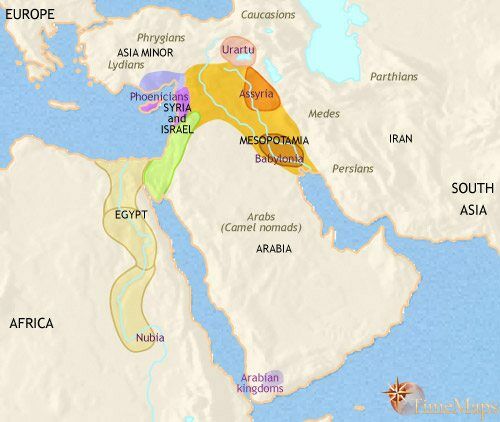
This mysterious collapse of empires has been the subject of confusion and numerous scholarly debates. What power filled the gaping void? During this period, whose language was being spread? Whose “alphabet” was having the most influence?
The Bible describes an Israelite empire at this period, dominating even the faraway Mesopotamians (the territory described as being in a “period of chaos”). 1 Chronicles 18-19 enumerate David’s conquests and expansion of territory, including his defeat of the Philistines, Moabites, Arameans, Syrians, Edomites, Ammonites, Amalekites, Mesopotamians and a number of smaller entities.
Despite a prevalent contrarian bias that “tends to reject any such possible link out of hand,” could the biblical account of a superb Israelite empire—which happens to slot perfectly into this precise timeframe and geopolitical situation—be the answer? An empire that drafted the Phoenicians into its service? (1 Kings 9:26-28). An empire with strong ties to the Greek world—a Greek world which finally emerged from its “Dark Ages” with not just the same alphabet but also similar stories to its Israelite “brothers”? (see sidebars “Spartans: Brothers to the Jews?” and “Greek Stories—Adopted From Israelite Stories?”) Could the glory and dominance of Solomon’s empire be primarily responsible for the spread of the alphabet to Greece?
We can glean further evidence for this from other parts of the ancient world.
It’s (Not) All Greek To Me
The Hebrew-Phoenician alphabet did not spread around this time to Greece only—it literally went everywhere!
A prime example is the ancient South Arabian script, which archaeological discoveries show was in use by at least the ninth century b.c.e. This script was used in Ethiopia and the southern territories of the Arabian Peninsula and is the forerunner of the modern Ethiopian Amharic script. But where did the South Arabian script originate? These polities were separate from the Phoenician state. In fact, scientists believe it was derived from the centuries-older proto-Sinaitic script (of course, it couldn’t be Israelite).

Both the historical and archaeological record have little to say about Phoenicia’s connections to Ethiopia during this time. Meanwhile, it is awash with Ethiopian-South Arabian connections to Israel. To this day, Ethiopians still hold dear to their Solomonic ties and the story of the establishment of their royal line from Solomon. The account in 1 Kings 10 documents in vivid and explicit detail the queen of Sheba’s arduous journey to visit Solomon, the good relations between the two nations, and the close connections with other Arabian states, which brought Solomon tribute. Is it coincidence that these same people, at precisely this time, developed an alphabet directly related to Israel’s?
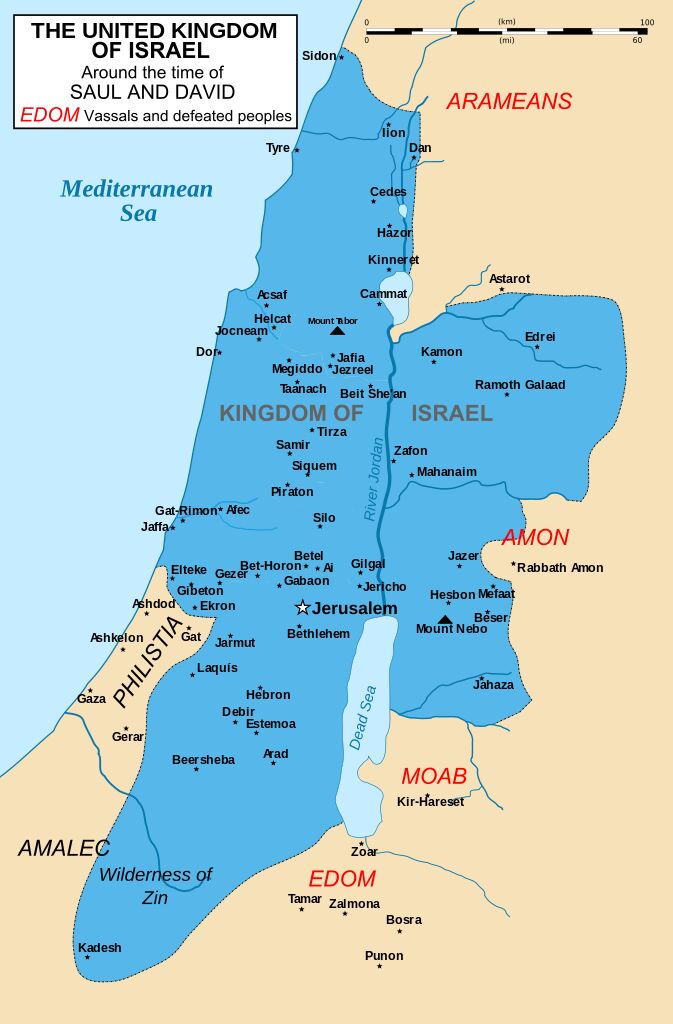
It wasn’t just the Ethiopians. There is evidence to show that virtually every nation surrounding Israel at this time—the Arameans in the northeast, the Ammonites in the east, the Moabites in the southeast, the Edomites in the south, the Philistines in the southwest, the Greek isles to the west, the Phoenicians in the north—all took on the same Hebrew-Phoenician alphabet.
The Phoenicians traveled the sea. But they didn’t travel the Middle East, engaging in a lot of activity with the inland states such as the Moabites, Ammonites and Arabians that bordered Israel. Did the Israelites and Phoenicians coincidentally find themselves in the business of spreading the alphabet around at exactly the same time—the Phoenicians by sea and the Israelites over land?
Or is it more reasonable to think that there was a singular driving force—an Israelite “empire” that led the way—and that led the Phoenicians themselves to use the same alphabet? As Eupolemus wrote, it was the Phoenicians who received their alphabet from the Israelites—not the other way around.
And why might that have been?
Solomon: Israel’s ‘Shakespeare’
The Bible not only describes David’s and especially Solomon’s empire as one of wealth and power, it also describes it as one of literary renown.
King David is credited with “penning” most of the book of Psalms; King Solomon with three other books of the Bible (Proverbs, Ecclesiastes, Song of Songs). 1 Kings 5:12 attributes to Solomon “three thousand proverbs.” The same passage describes Solomon’s wisdom (including, undoubtedly, his writings) as excelling “the wisdom of all the children of the east, and all the wisdom of Egypt. For he was wiser than all men … and his fame was in all the nations round about. … And there came of all peoples to hear the wisdom of Solomon, from all kings of the earth, who had heard of his wisdom” (1 Kings 5:10-11, 14).
King Solomon’s “counsel” and “knowledge” came in the form of writing, as well as speaking (Proverbs 20:18). And besides David and Solomon, 1 Chronicles 25:8 highlights the presence of teachers and scholars in Israel during this time.
The book of Ecclesiastes specifically emphasizes Solomon’s teaching—including the heavy emphasis on the written word. Passages reference Solomon’s search for just the right words, “and that which was written uprightly” (Ecclesiastes 12:10). At the end of his life, a weary Solomon related the following: “[F]urthermore, my son, be admonished: of making many books there is no end; and much study is a weariness of the flesh” (verse 12). It sounds veritably Shakespearean (and he was a man largely credited with standardization of the English language).
These passages identify Israel, certainly its leaders and educated class, as prolific writers and publishers. At exactly the same time in secular history and archaeology, we see the adoption of the same alphabet by countries surrounding Israel and beyond—the very countries identified in the Bible as having close contact with Solomon’s kingdom.
Is it a stretch to think that these trends and developments sprung from the same fundamental cause—the literary influence of a Solomonic empire?
If this is true—if our alphabet has its origins in Israel—this means you and I regularly use writing derived from the same used by kings David and Solomon. That alone is remarkable to consider when reading over the alphabetical symbols that cover this magazine.
But beyond that, there is significant evidence to show that our comprehension of such symbols comes courtesy of the biblical Israelites. Perhaps that shouldn’t be too surprising after all, given our Western society is based on a Judeo-Christian foundation. It draws on the Hebrew Bible as the foundational text (the New Testament itself repeatedly affirms this), not any “Phoenician” Bible. Thus, should we be surprised to find it draw on the same writing system?
But in one specific area we hit a wall of sorts. Namely (to revisit the quote in the introduction), that “researchers today tend to reject any such possible link out of hand”—any such link to the veracity of the Bible, to the glory of Solomon’s kingdom, to the power of ancient Israel—from the little symbols that make up an alphabet to a gigantic empire.
But sometimes biases can curse us with an inability to see the forest for the trees.
So while we can thank Shakespeare for the development of our English language, perhaps we can thank the ancient “Shakespeare,” Solomon, and his God-given power and wisdom for the spread of those precious, beautifully simple letters on which it is based.
Magazine Article Sidebars:
Sidebar: How ‘Israelite’ Were the Phoenicians Anyway?
Just who were the Greek historians referring to when they mention the early Phoenicians? Herodotus, the fifth-century b.c.e. historian, does not mention “Israel” or “Judah” in his exhaustive work The Histories.
Interestingly, Herodotus does describe the Phoenicians in the very first verses of The Histories. And what does he say of them? He describes their emergence from the Red Sea area. “The Persian-learned men say that the Phoenicians … came to our seas from the sea which is called Red, and having settled in the country which they still occupy, at once began to make long voyages …” (The Histories, 1.1.1). The exact identity of this “Red Sea,” or Erythra Thalassa, is debated (with significant opinion that it refers to the Persian Gulf). But there’s also Herodotus’s claim that the custom of circumcision is found among “[t]he Phoenicians and the Syrians of Palestine” (Histories, 2.104.3). Who were the famously circumcised people of the Levant? The Israelites.
Could these references to the “Phoenicians,” then, actually be a broader name used to include the Israelite people? Such a broader Greek association would not be without precedent. For example, the name Ethiopia, derived from the Greek Aethiopia, today refers to a specific country and a specific people. But to the classical Greeks, the name was used to refer to black peoples in general, south of Egypt.
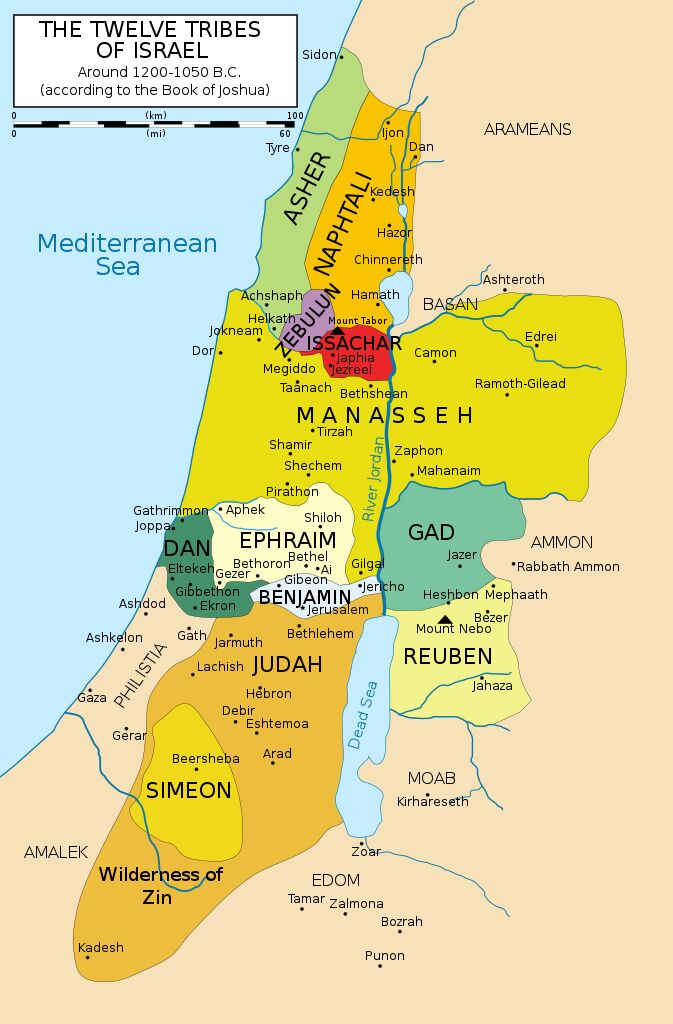
An Israelite association with Phoenicia would make sense. After all, key “Phoenician” territory was assigned to the Israelite tribe of Asher, from which the tribe operated ports (Joshua 19:24-31—that territory apparently included Tyre and Sidon).
It is feasible that this “melting pot,” independent, early Phoenician city-state territory at least included an Israelite population. This would make sense, given the Bible’s accounting of half-Israelite, half-Tyrian individuals coming from this area (i.e. 1 Kings 7:14; 2 Chronicles 2:13). Technically, even the royal dynasty of Ahab was half “Phoenician,” by virtue of his infamous wife, Jezebel.
Sidebar: Spartans: ‘Brothers of the Jews’
Israelite connections with the Greek world run deeper than the exchange of goods and stories—there is some evidence of a familial link. In the third century b.c.e., King Areus i of Lacedemonia (the official name for the Spartan territory of southwest Greece) wrote a letter to the Jewish ruler Onias i.
The short message read as follows: “Areus, King of the Lacedemonians, to Onias, sendeth greeting: We have met with a certain writing, whereby we have discovered that both the Jews and the Lacedemonians are of one stock, and are derived from the kindred of Abraham. It is but just therefore that you, who are our brothers, should send to us about any of your concerns as you please. We will also do the same thing, and esteem your concerns as our own, and will look upon our concerns as in common with yours. Demoteles, who brings you this letter, will bring your answer back to us.”
A number of interesting theories exist as to how this familial connection was “discovered” by the Spartans—including links to Israelites from the tribes of Dan or Simeon. There is literary evidence to suggest a strong Danite presence in Greece itself—particularly in Achaea, where a “Danaid” dynasty was established (ironically, Herodotus’s Cadmus was also from this area). Whatever the answer, this is an example from the Greek world of the close nature of the Israelites—in blood, as well as in alphabet.
Sidebar: Greek Stories—Adopted From Israelite Stories?
The deep connections between the Israelites and the Greek world are numerous. Some believe that the Hebrew word for traders—Haroclim—was picked up as the name for the Greek myth of Heracles (Hercules).
The numerous similarities between the Greek strongman and the Danite Samson are intriguing. Both killed a lion with their bare hands. Both were responsible for the death of their first wives in a fire. Both singlehandedly wiped out armies. Both faced off against enemies fielding giants. Both are known for their signature use of a club as a weapon. Both drank water that miraculously came from a rock. Both tore down the gates of a city. Both had a weakness for women. And both unwittingly met their demise at the hands of a lover identified as a “man-destroyer” who betrayed them—Samson by Delilah, Heracles by Deanirah. And surprise, surprise—Heracles was of the Danaan line.

Are all these similarities coincidence? There are numerous other examples of early Israelite stories that directly parallel early Greek history and symbolism—such as the serpent-entwined “symbol of healing” and a battle between a single warrior armed with an oxgoad against a Greek army. Evidently, certain Israelite history was incorporated into early Greek myth. If even Israelite stories were adopted by the Greeks, is it unreasonable to believe that they also could have adopted their alphabet?
Sidebar: The Proto-Siniatic Alphabet
The question of exactly who gave the alphabet specifically to the Greeks, and therefore to us, remains open to debate. But at its core, the question about alphabet transmission is a side story. This is because evidence identifies the Israelites as being responsible for the creation of the proto-Sinaitic alphabet, the alphabet that fathered them all.
In 1904-05 excavations at the Sinai site Serabit el-Khadim, the first of these early proto-Sinaitic inscriptions were discovered by Sir William Flinders Petrie. This ancient script was discovered among a slave Semitic community working in Egyptian mines during the first half of the second millennium b.c.e. This enslavement matches with the period of the biblical slavery of the Israelites in Egypt. Further, this script was discovered in an area of the Sinai matching a key part of the biblical Exodus story. Debate rages as to the translation of this script. For his part, Prof. Douglas Petrovich identifies several potential biblical settings and personalities, including possible references to the biblical Asenath, Ahisamach and even Moses.
Are the Phoenicians known for their enslavement in Egypt before migrating northward into the Levant? Are the Canaanites remembered continually for their suffering in Egyptian labor camps? Of course not. It is the Israelites.
To quote Eupolemus: “Moses was the first wise man, the first who imparted the alphabet to the Jews ….”
Sidebar: Why Did the Alphabet ‘Take Off’ Anyway?
Why was the new “Hebrew-Phoenician” alphabet such a hit? Why did it spread further into nearly every country on Earth today? Why does nearly every country (except a handful of Asian nations) use this alphabet system as a basis for their various languages?
Simplicity.
This ancient writing system was revolutionary for its simplicity. One simple sound for one simple symbol—and only 22 of them. In an ancient world of complex hieroglyphs and syllabaries, with hundreds of different symbols to learn (and which only a dedicated scribal few could read), “proto-Sinaitic-cum-Hebrew” really was the working man’s language—a literal “language of the slaves” that anyone could readily become educated in and use. (So it is probably no wonder, then, that experts recently discovered literacy to be widespread among the ancient Israelites—see “Forensic Analysis Reveals Widespread Literacy in Ancient Judah” for more information.)
All in all, perhaps it is no wonder that a God with a love of “simplicity”—as the Bible often describes—used this alphabet to preserve His Holy Scriptures.

